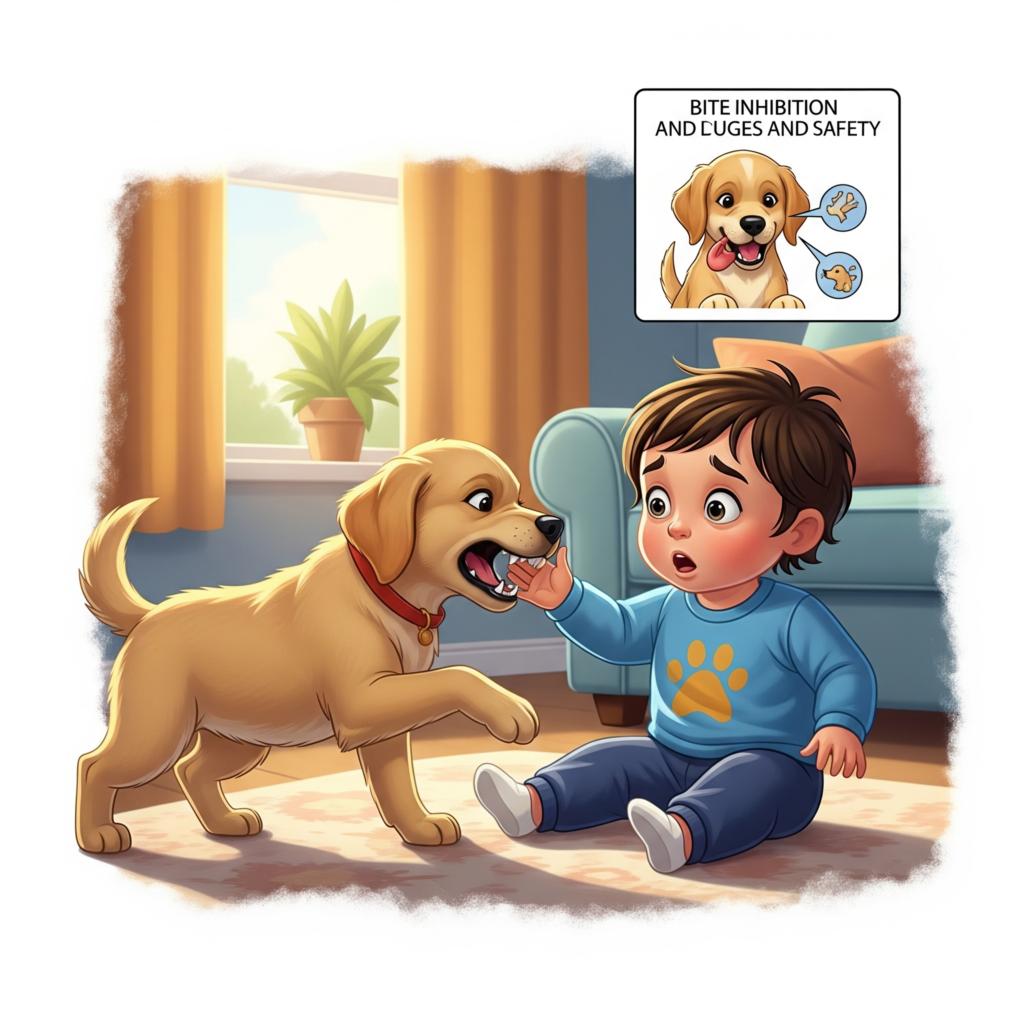
Puppies are adorable, playful, and usually full of love—but just like toddlers, they can get overwhelmed, scared, or defensive. If your puppy snaps at your child, it’s a serious signal that shouldn’t be ignored. While it may not mean your puppy is aggressive, it’s important to respond with calm, clear steps to keep both your child and puppy safe 🐶👶.
Stay Calm and Separate Them Immediately
If your puppy snaps at your child, the first step is to calmly but quickly separate them. Don’t yell or panic. Your goal is to de-escalate the situation without adding more stress. Pick up the puppy gently or call them away, then calmly move your child to another room.
Avoid punishing the puppy on the spot. Reacting with anger can make the behavior worse or create fear-based responses in the future.
Assess What Just Happened
Think about what was going on right before the snap. Puppies may snap because they’re:
- Overstimulated from too much play
- Startled while sleeping or eating
- In pain or not feeling well
- Feeling cornered or unable to escape
- Tired of rough handling or poking
Understanding the context is key to preventing it from happening again. If your child pulled on the puppy’s ears or tail, the puppy may have been trying to say “I’ve had enough.”
Talk to Your Child in Age-Appropriate Terms
It’s important to teach your child how to behave safely and respectfully around pets 🧒🐾. Use this opportunity to gently explain that puppies have feelings too. Say things like:
- “Let’s give the puppy some space when she’s eating.”
- “No pulling the tail, that can hurt the puppy.”
- “We use soft hands when we pet the puppy.”
If your child is very young, modeling the right behavior yourself can be more effective than verbal instructions alone.
Watch for Warning Signs of Stress in Puppies
Before a snap happens, puppies often show signs of discomfort. These include:
- Lip licking or yawning when not tired
- Turning their head away or walking off
- Growling or stiff body posture
- Hiding under furniture or backing away
Learning to read these signals helps you step in before things escalate. If you notice any of these signs, guide your child to give the puppy space.
Set Boundaries and Create Puppy-Only Spaces
Just like kids, puppies need quiet time. Set up a crate, pen, or small room where your puppy can rest undisturbed. Let your child know that when the puppy goes to this space, it means quiet time.
Supervised interaction should be the rule until both your puppy and child know how to play nicely with each other. Never leave young children alone with a puppy, no matter how gentle the dog seems.
Provide Outlets for Puppy Energy
Sometimes puppies snap because they’re bored, under-stimulated, or haven’t had enough exercise. Make sure your puppy has enough playtime, chew toys, and opportunities to burn off energy safely. A tired puppy is a better-behaved puppy! 🐕
Interactive toys, treat puzzles, and short training sessions throughout the day are great for mental stimulation and keeping your puppy calm.
Use Positive Reinforcement to Shape Behavior
Reward calm and friendly interactions with treats, praise, or gentle petting. If your puppy calmly allows your child to pet or play, make it a big deal with happy voices and a treat. Over time, your puppy will associate your child with good experiences.
Never punish snapping with harsh methods. Instead, work on creating positive moments and reducing triggers.
Consider Help from a Trainer or Behaviorist
If the snapping becomes frequent or you’re unsure why it’s happening, a certified dog trainer or animal behaviorist can help. Look for someone experienced with positive reinforcement and family environments. Sometimes all it takes is a few sessions to get on the right track.
When to See the Vet
Don’t rule out pain or medical issues. If snapping happens suddenly or without warning, take your puppy to the vet to check for injuries, infections, or discomfort. Puppies teething, for example, may be extra sensitive to touch in certain areas.
Final Thoughts
A puppy snapping at a child is a warning sign—but not the end of the world. With patience, boundaries, and understanding, most puppies grow into loving, loyal companions who are great with kids 💕🐾. The key is responding early and wisely.
Give your puppy and your child the tools they need to grow together safely, and you’ll be setting the stage for a beautiful lifelong friendship 🐶👦❤️. PetsDogPuppy
